

Max Davies
2025 Toyota Corolla SX review
6 Days Ago
The Huracan Evo Spyder is something to be celebrated not just for its drop-dead looks but more for what is the last naturally-aspirated V10.
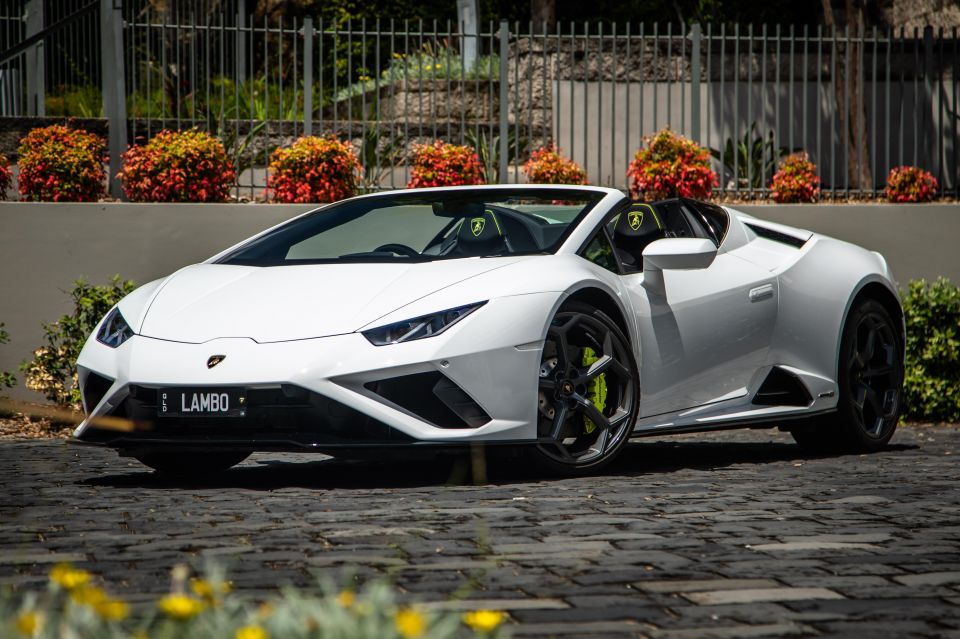
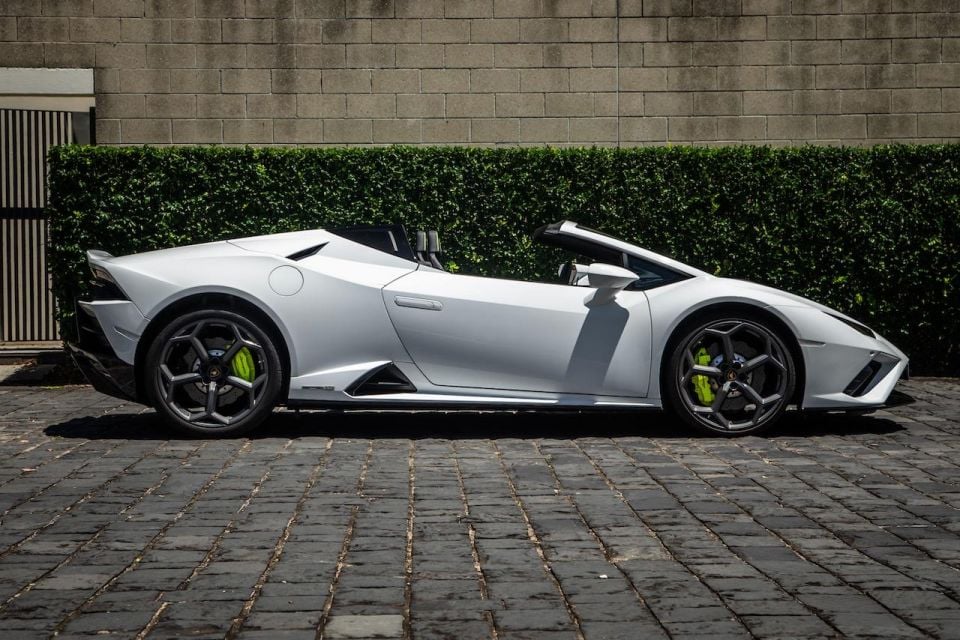

Senior Road Tester
New from
$596,000
excl. on-roads

Senior Road Tester
New from
$596,000
excl. on-roads


Senior Road Tester
New from
$596,000
excl. on-roads

Senior Road Tester
New from
$596,000
excl. on-roads
Quickly see how this car stacks up against its competition. Select any benchmark to see more details.
Where expert car reviews meet expert car buying – CarExpert gives you trusted advice, personalised service and real savings on your next new car.
As someone with a self-confessed love of all things Italian, it almost sacrilegious to be driving the rear-wheel drive Lamborghini Huracan Evo Spyder anywhere but Italy.
If it was up to me, we’d collect the open-top Huracan direct from the factory in the rustic village of Sant’Agata Bolognese, grab one of the world’s biggest pizzas from Maggi Pizzeria down the road, and head north towards the Valle d’Aosta at warp speed, only breaking for the mandatory espresso and thinly-sliced mortadella on a freshly-baked Rosetta roll.
You can imagine the notion of collecting such an enchanting Italian exotic from a gridlocked Parramatta Road, in Leichhardt was slightly less enchanting. It used to be known as Little Italy, but it’s not infused with the same level of Italian culture as it once was.
The outlook was decidedly grim until I climbed in, dropped the roof, and fired up one of the last great naturally-aspirated V10 engines.
It’s wrong to call it noise; it’s more of a mechanical symphony that produces a sound to rival Andrea Bocelli performing at the Piazza De Cavalieri.
The theatrics and Lamborghini madness starts before you hit the starter button, which requires the driver to lift what I refer to as the fire control latch. It’s a bright red weapons switch cloaking the actual starter button itself, a small detail that will never, ever get tiring.

However, perhaps the bigger question worth asking at this point is whether you go for the Evo Coupe, or the noisier and equally head-turning soft-top.
To complicate matters further, do you choose all-wheel drive or rear-wheel drive?
Think of the Huracan Evo Spyder as the latest update of the Huracan with added power from an iteration of the V10 developed for the Huracan Performante, albeit detuned for rear-drive duties.
For those with a keen eye for detail there’s new front and rear bumpers along with a new cabin, though that’s even harder to spot.
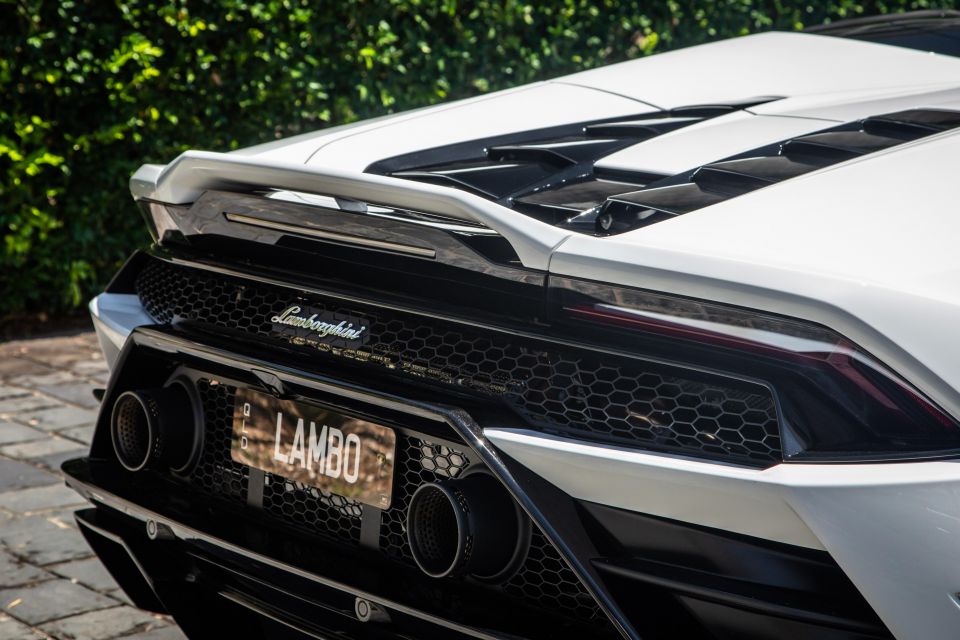
Lamborghini recently adjusted its prices for Australia, which saw the Huracan Evo Spyder RWD priced from $422,606 before on-road costs.
That’s significantly less than the Huracan Evo Spyder AWD with its sticker price of $505,385 excluding on-roads.
You’ll likely want to test drive the significantly less expensive (but by no means less alluring) Lamborghini Huracan Evo RWD Coupe given its more attractive $384,187 price before on-road costs are added.
My personal favourite remains the Huracan Evo AWD Coupe, which I was fortunate enough to drive at the Bahrain F1 circuit at its launch a couple of years ago.
It’s priced at $459,441 before on-roads. I still haven’t fully recovered from the euphoria of that mind-blowing session.
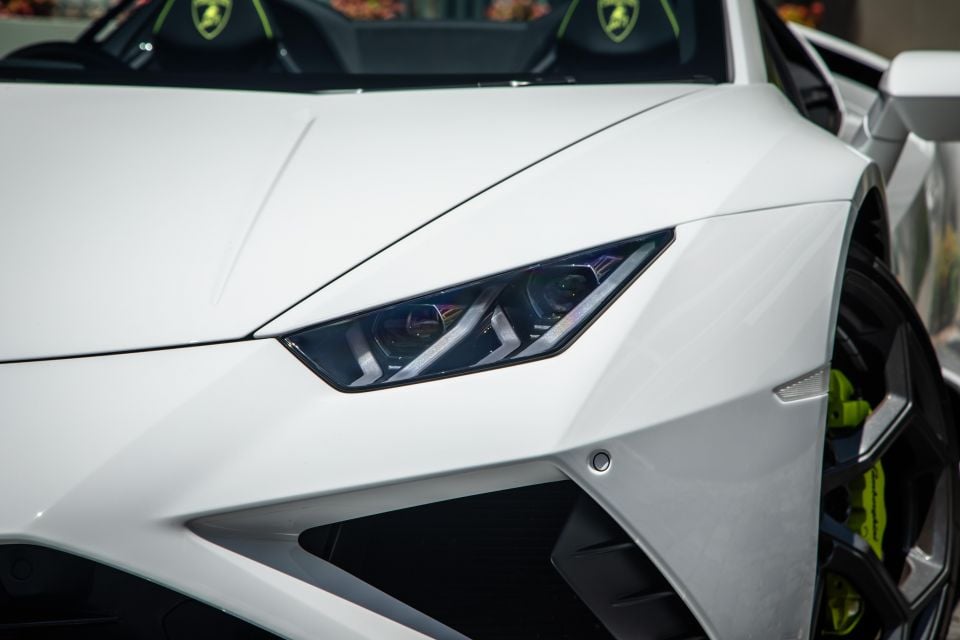
There are a few key competitors when it comes to the Huracan, not least of which is the Ferrari F8 Tributo Spider priced from $536,888 before on-roads.
For the purist who values precision and track performance from their roof-down experience, McLaren gives you the choice of its 600LT Spider from $496,000 before on-roads, or the 720S Spider priced from $567,000. Both are viciously quick.
From the Porsche stable you’ve got the 911 Turbo S Cabriolet from $494,500 before on-roads.
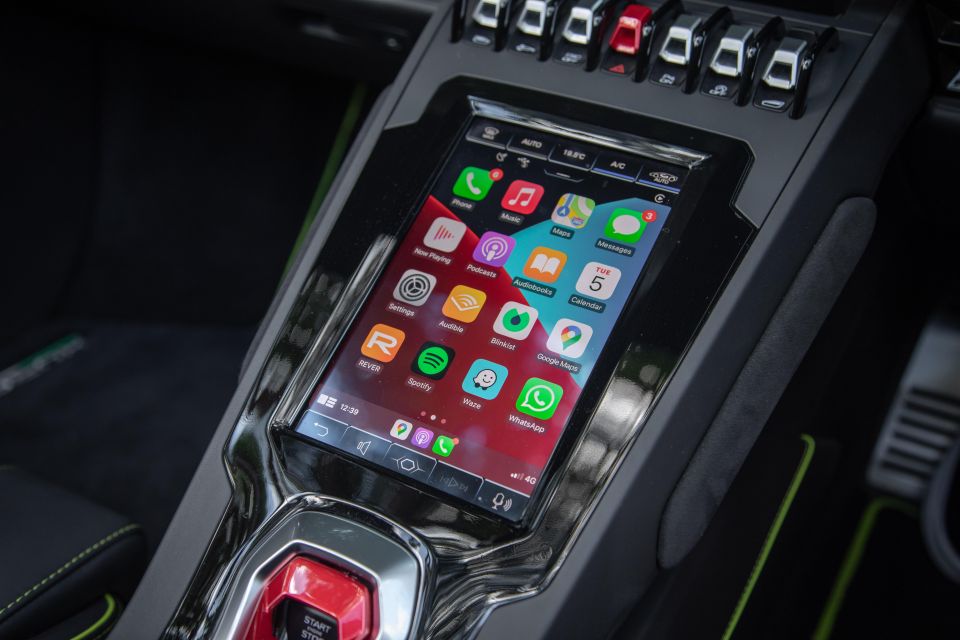
Buy your new car without the stress. It's fast, simple and completely free.

Great service from Travis and team, second time I have used this business would not hesitate to recommend them to anyone
Craig C.
Purchased a Ford Ranger in Sunshine Coast, QLD
CarExpert helped Craig save $7,224 on his Ford Ranger, now let us save you on your next new car.
Get your BEST priceIf we’re talking about standard equipment, not a lot. Lamborghini says most buyers like to configure their car and make it unique, or at least different from your neighbour’s Huracan.
Lamborghini calls it Ad Personam, a program allowing you to spend more money by choosing from an exhaustive list of colours, trims, stitching, and equipment. Some owners say that’s half the fun.
For instance, our Huracan EVO Spyder was equipped with a host of extra features such as the Style Package ($3600), the rear diffuser in gloss black ($6480), tailpipes in matte black ($1200), 20-inch wheels in graphite grey ($8410), brake calipers in light green ($4080), and single-colour Evo leather seats ($4800).
Even the so-called new sports seats in standard size were a $13,690 option – and I still have no idea as to what seats are standard fitment on this car.
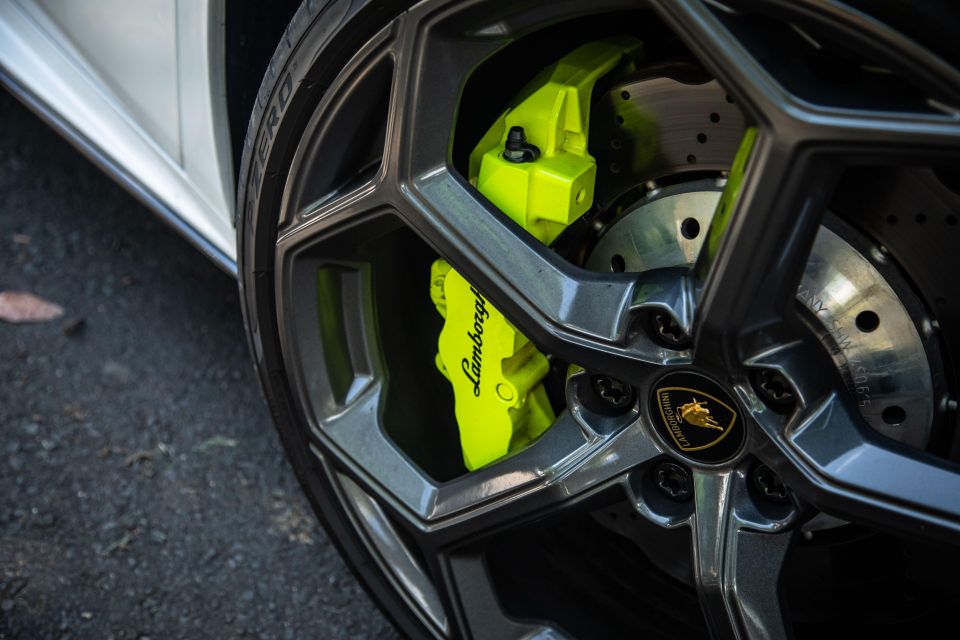
There’s more. The floor mats with leather piping and double stitching ($2400), embroidery on the headrests ($1800), leather roof lining and pillars ($2400), coloured contrast stitching ($1680), steering wheel stitching ($480), Apple CarPlay ($6480), a rear-view camera ($3850), parking sensors ($3600), and DAB radio ($1450) were all options.
Believe it or not tyre pressure monitoring is standard, but the ambient light package ($2050) and cruise control ($1680) aren’t, while the magnetic dampers with front lifting system will set you back $12,970.
If you want the three-year maintenance package that’s another $7450. Ouch.
The whole thing becomes more confusing if you tick the Driver or Lifestyle Packs which, if purchased collectively, could save you a bit of coin.
The Driver’s Pack includes the magneto-rheological suspension and carbon-ceramic brakes for $5760… but there’s a catch. The cost of painted calipers is another $5050.

However, the savings on that pack alone are still significant given the carbon-ceramic brakes are $22,100 and adaptive suspension is listed as $5760.
The Lifestyle Pack at $720 for the Evo Spyder offers similar savings for its goodies, which include an anti-theft alarm ($1320), front and rear parking sensors ($3600), lifting system ($7210), and 19-inch silver rims ($3600).
Interestingly, customers can purchase the Driver and Lifestyle Packs for $6480 combined with the stipulation you’ll need to add the Smartphone Interface with Apple CarPlay ($6480) to get the Lifestyle Pack at the discounted price.
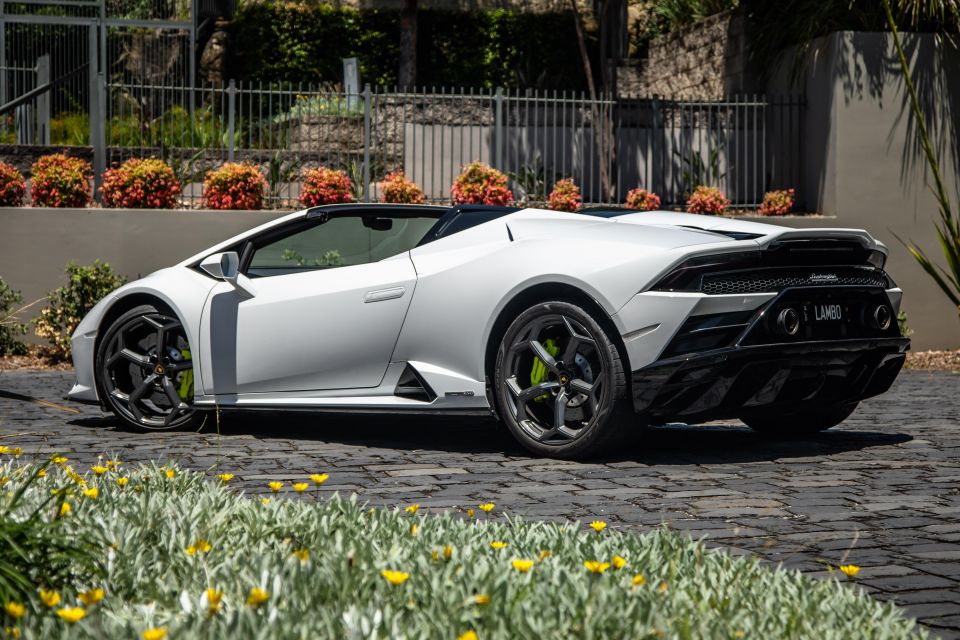
Like all or most exotic sports car manufacturers, Lamborghini doesn’t submit its cars to official crash testing due to the cost of the vehicles.
That aside, the Huracan Evo Spyder gets full-size dual-stage front airbags and a front adaptive passenger airbag, while the seats can also deploy side ‘head thorax’ airbags.
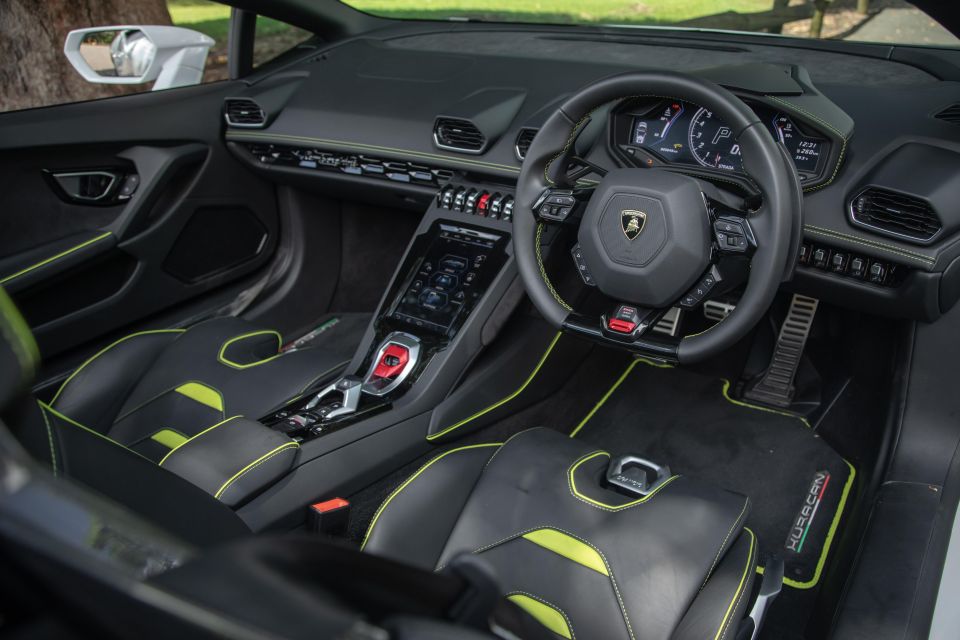
One look at the Lamborghini Huracan Evo Spyder and your expectations for the interior are sky high. It doesn’t disappoint, with a blend of theatrics, top-shelf materials, and a suitably low-set driver’s seat for maximum feel and control of one of the world’s great open-top supercars.
Those carbon/leather buckets are visually spectacular and offer maximum high-speed support with aggressive bolsters from bottom to shoulders. The leather itself is exceptionally supple, but don’t expect electronic adjustment here – both seats are manually adjustable.
There’s a flat-bottom leather-wrapped steering wheel with an ideal rim and a set of paddle shifters that are also beautifully crafted as a nod to Lamborghini’s design language.
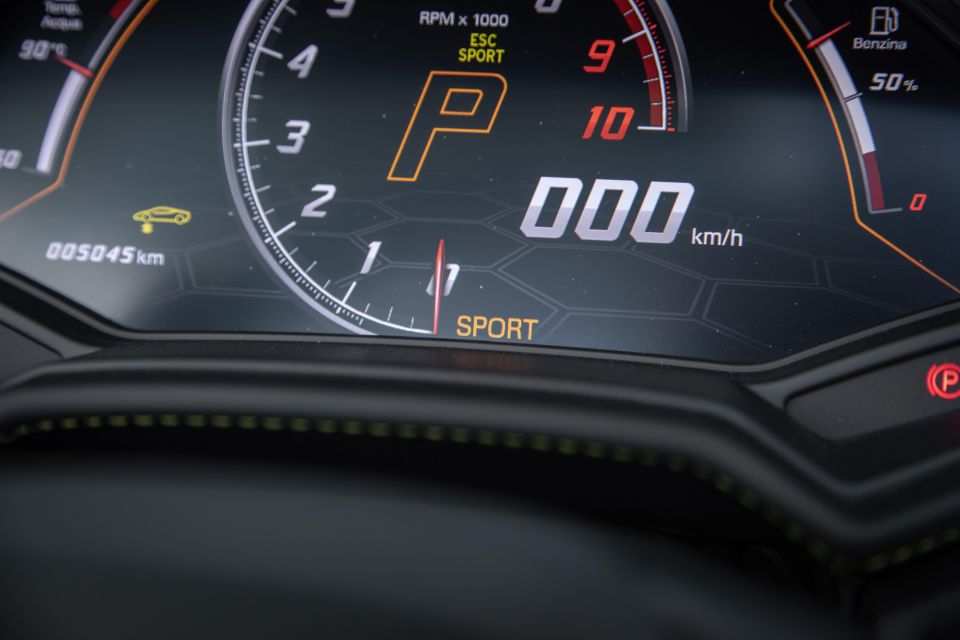
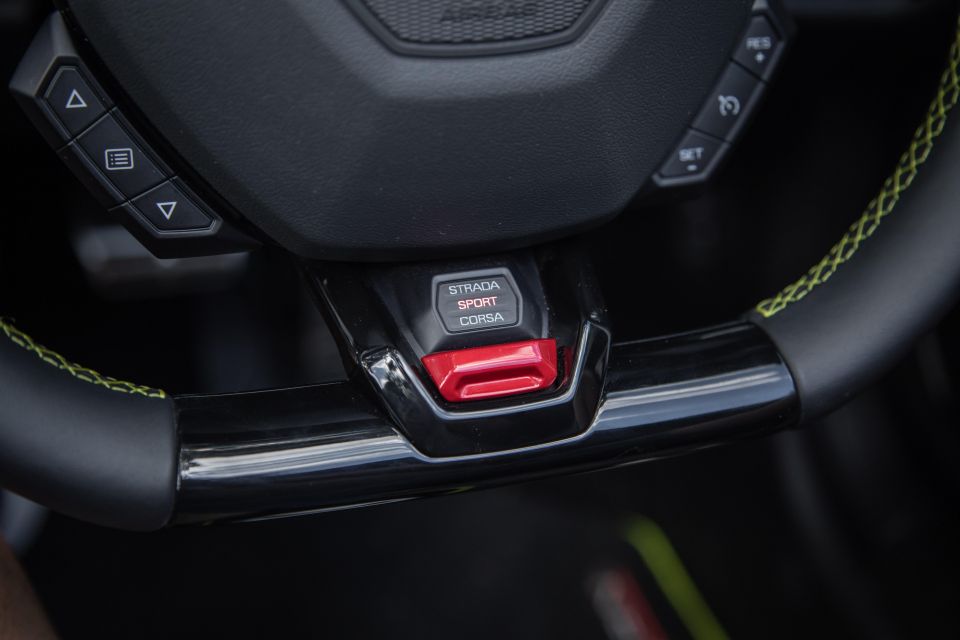
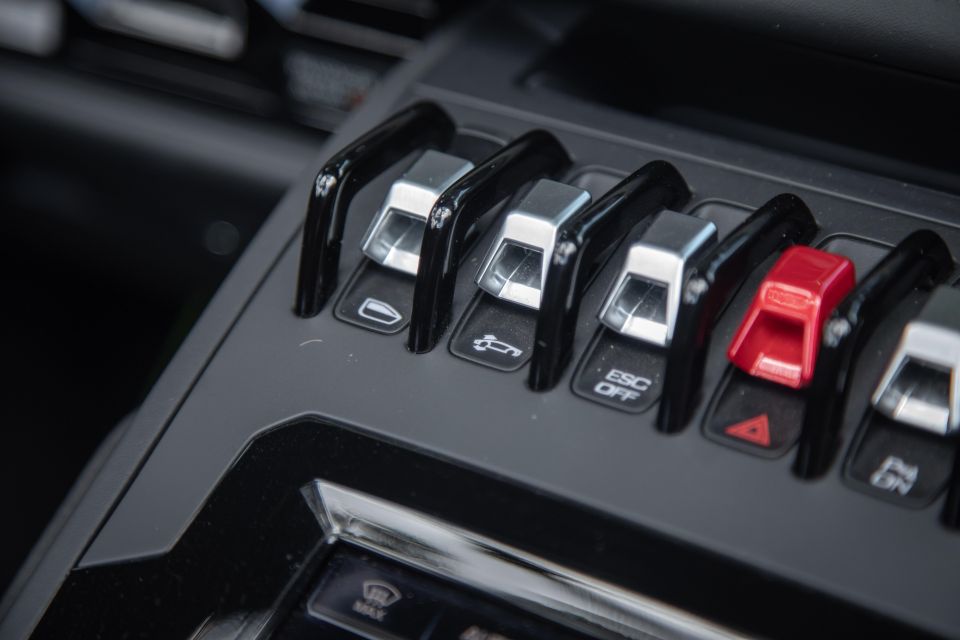
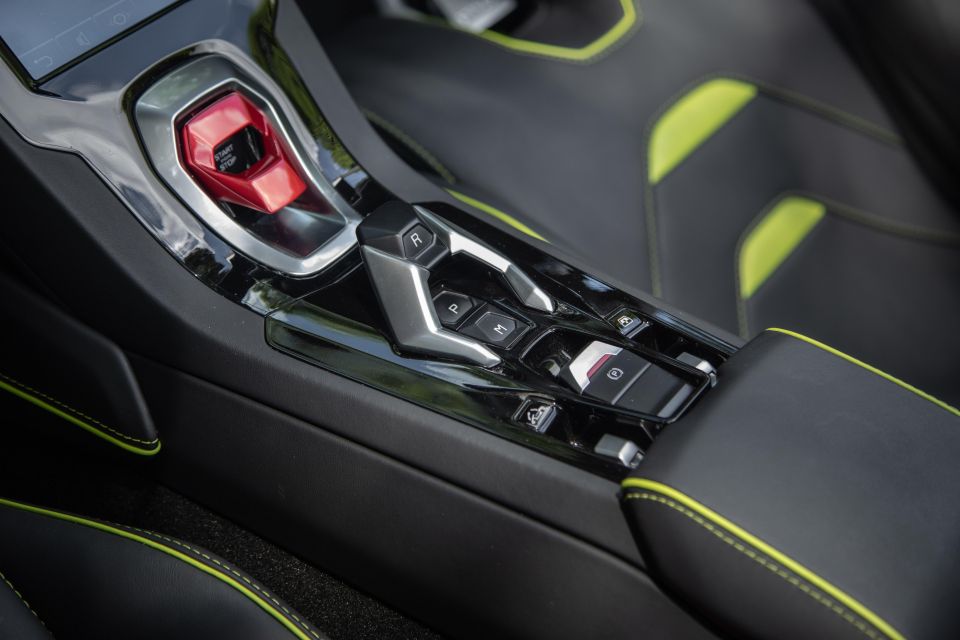
Key elements here are the red drive mode switch on the wheel itself and the fire control lever (as I like to describe it) that hides the start button when flicked upwards.
Apart from the single row of seven metallic-look switches at the top of the centre console for features such as the windows and stop/start, most other functions are accessed by the touchscreen.
Clarity is generally good, even in direct sunlight, and the response is quick, though it suffers from finger marks quite badly so carry a wipe.
Anyone taller than 180cm would be wise to check headroom with the roof closed. My impression is cabin space could be restrictive for taller frames.
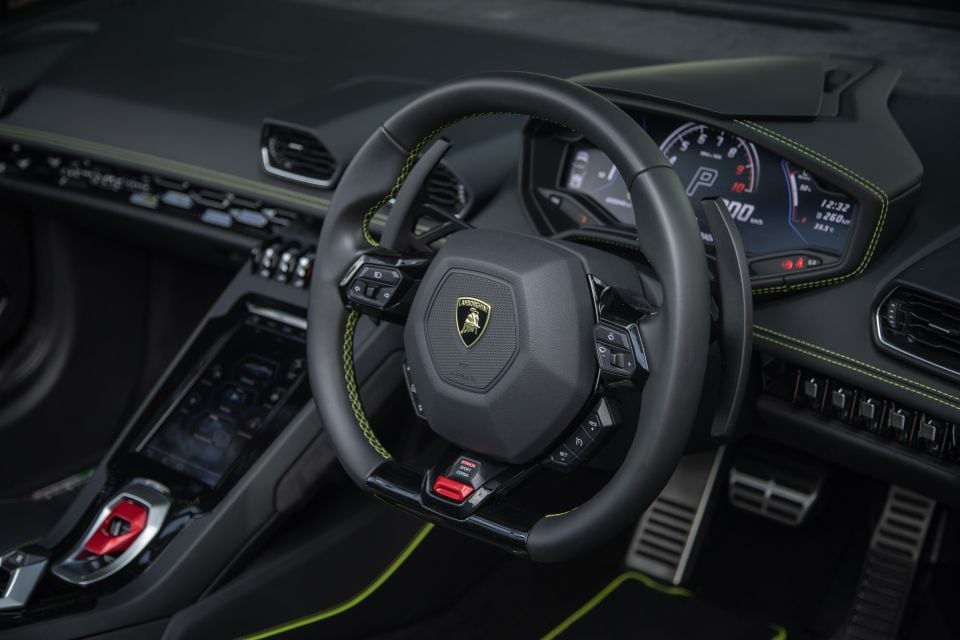
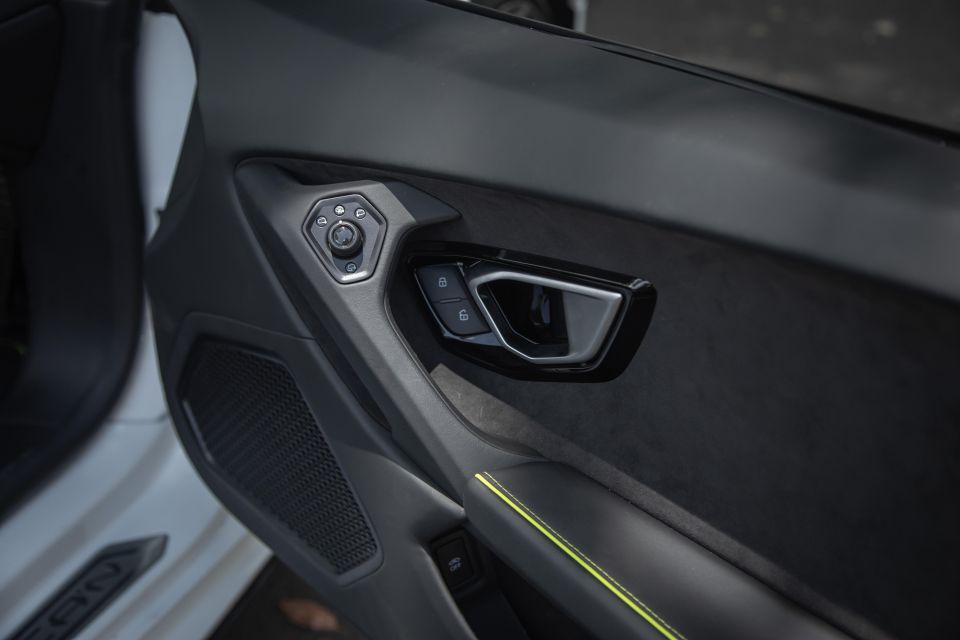

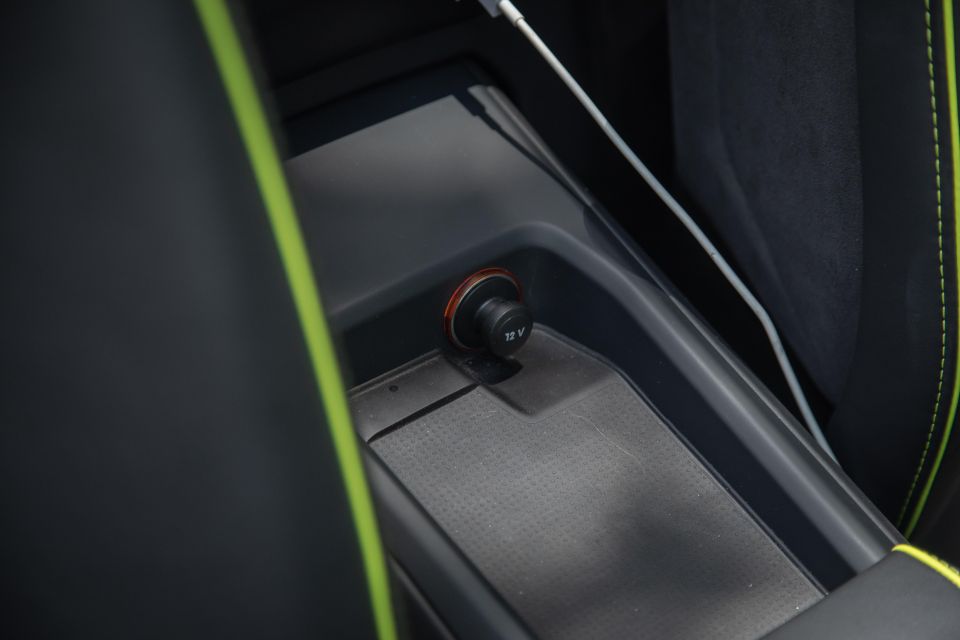
That said, most of the time you’ll want to pilot this Evo sans roof, because the open-top addiction is quick to take hold for the noise, let alone the joy of wind-in-the-hair motoring. If you do need to close it, of course, it’s a cinch.
Unlike the coupe, there’s little if any space behind the seats in the Spyder – perhaps enough for x-ray results. Storage space for phones and keys is also tight but there is tiny spot at the very back of the console, as well as a USB port and 12V socket.
Overnight trips for two are possible thanks to the small boot space at the front of the car, which is large enough to swallow two soft bags.
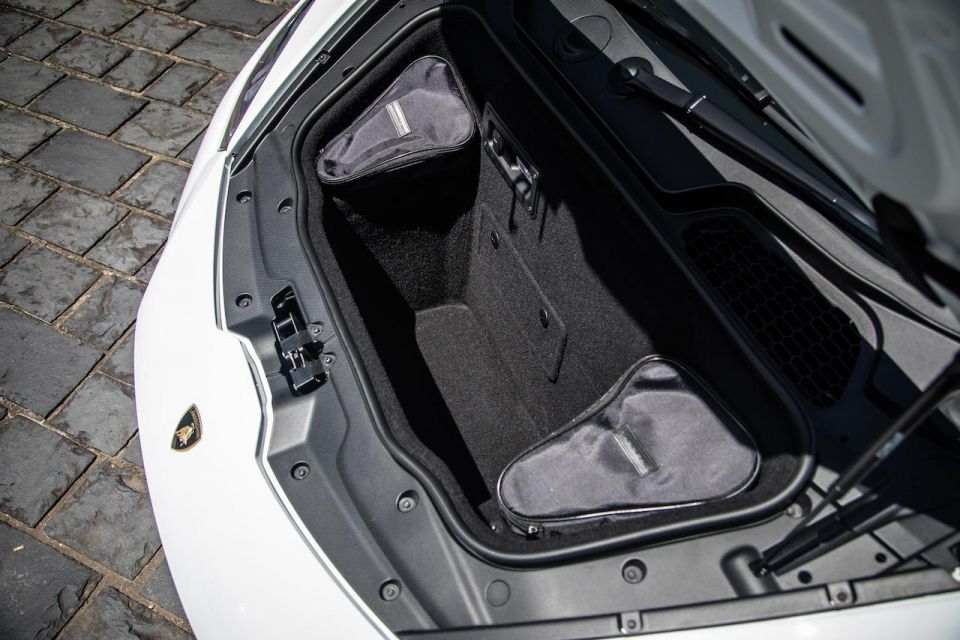
With ever-tightening global emissions regulations, it’s probable the Huracan Evo’s mid-mounted5.2-litre V10 will be the last great naturally-aspirated powertrain in a production car. It’s cause for celebration.
The 90-degree V10 makes 449kW of power at a hard-charging 8000rpm and 560Nm of torque from 6500rpm, sent to the rear wheels through a seven-speed dual-clutch transmission.
That’s noticeably down on the same engine in the all-wheel drive Evo Coupe and pre-update Performante, both of which develop 470kW and 600Nm through the same gearbox.
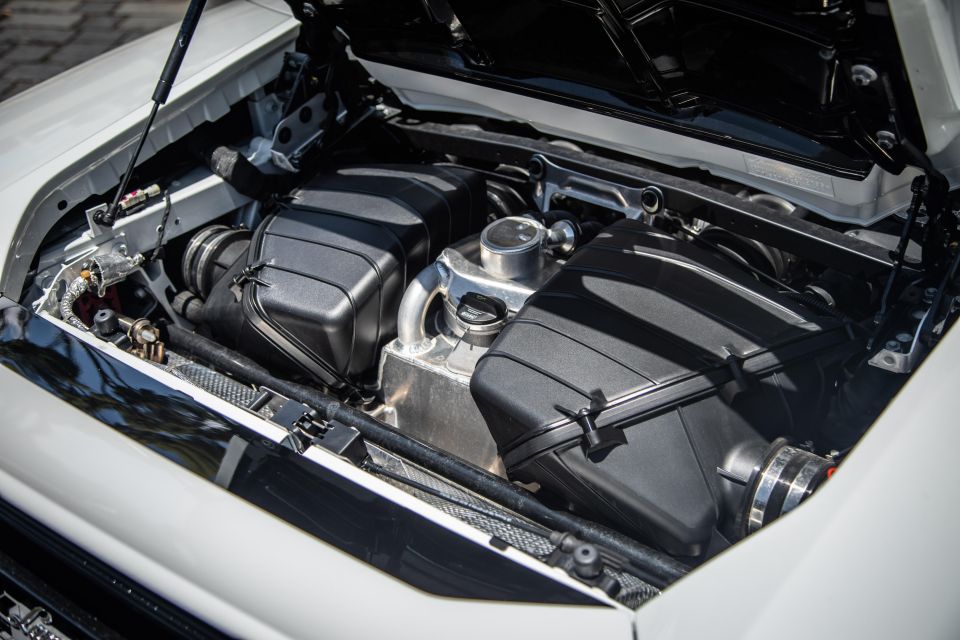
The Spyder is capable of rocketing from zero to 100km/h in 3.5 seconds with a top speed of 324km/h, but that’s off the pace of the all-wheel drive versions.
The Huracan Evo Spyder AWD needs just 3.1 seconds for the same sprint, while the AWD Coupe can do it in a claimed 2.9 seconds. The Huracan Evo RWD coupe shaves two-tenths off its Spyder cousin for a 3.3-second claim.
The only obvious atmo rival to the Lamborghini Huracan Evo Spyder is Audi’s second-generation R8 RWD Spyder, which uses the same 5.2-litre V10, but only makes 397kW and 540Nm for a 0-100km/h sprint time of 3.8 seconds.
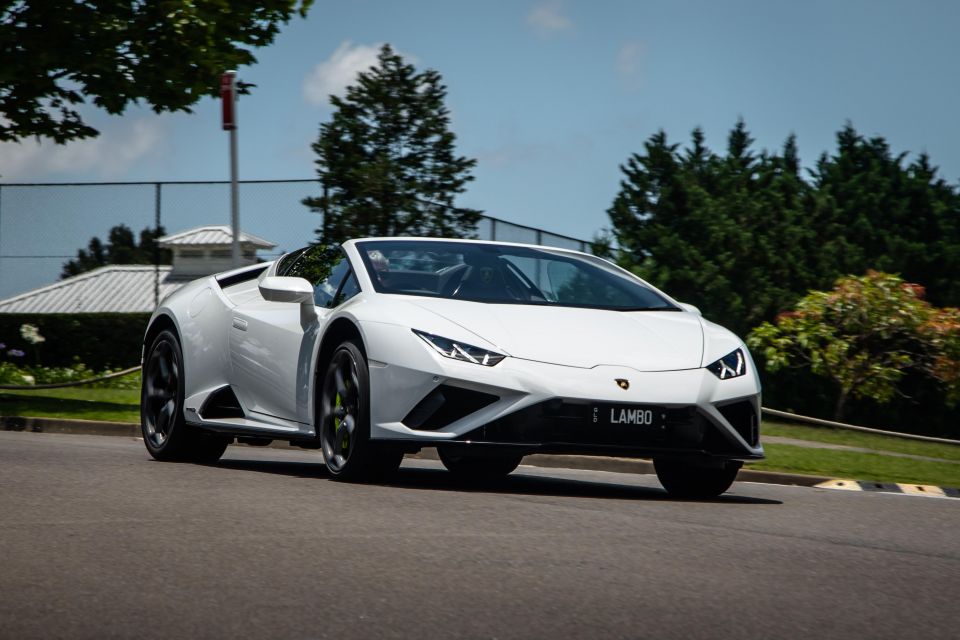
Where expert car reviews meet expert car buying – CarExpert gives you trusted advice, personalised service and real savings on your next new car.
Arriving at Lamborghini Sydney I was hoping the tester wasn’t the Bianco Monocerus (white) example sitting on the showroom floor next to the Aventador. Not because I dislike the colour, but because Lamborghinis simply look better with a bright paint job, or dark grey if you must.
I’m partial to Arancio Borealis, which matches the small-scale model I often stare at in the office. But if you’re looking to fly under the radar in your Huracan Evo Spyder, then Grigio Lynx is the pick as far as stealth goes.
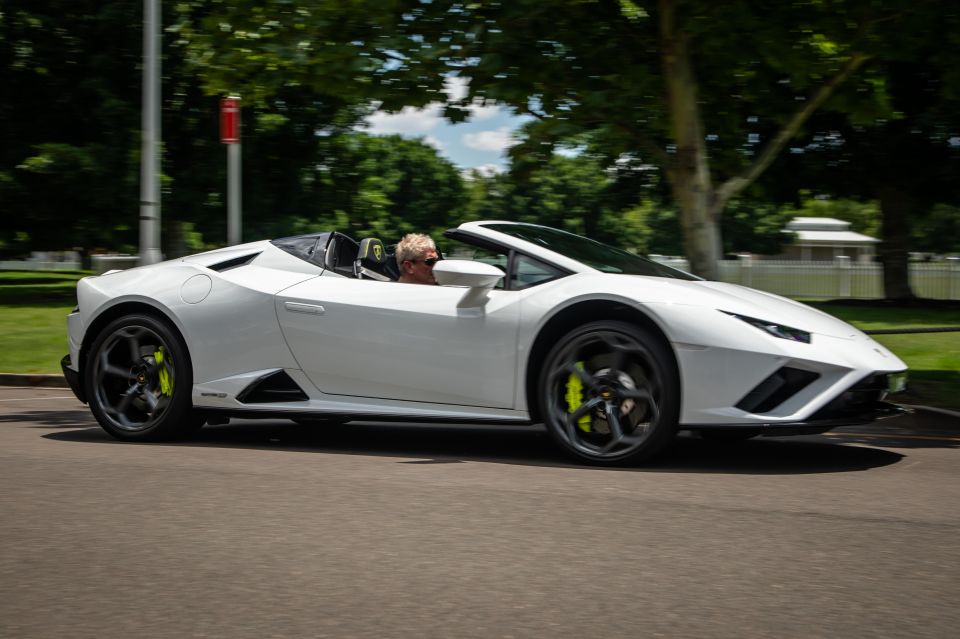
At least the Verde Mantis seat trim, piping, and stitching was a strong contrast to our tester’s white exterior. Anyway, all of that pales into insignificance when you lift the red fire control switch and hit the start button.
It’s almost immediate, but not quite. The V10 makes its presence known with one of the most intoxicating start-up greetings you’re ever likely to enjoy.
There are no silly push buttons to engage forward motion, you just pull the right-hand paddle, which puts it into first, and punch the throttle. Reverse is unusual in that you pull the lever behind the start button.
Best not to enter or exit any driveway without first raising the nose so you don’t rip apart the front splitter, which is easier to do than you might imagine. You just hit the switch and the front lift is immediate.
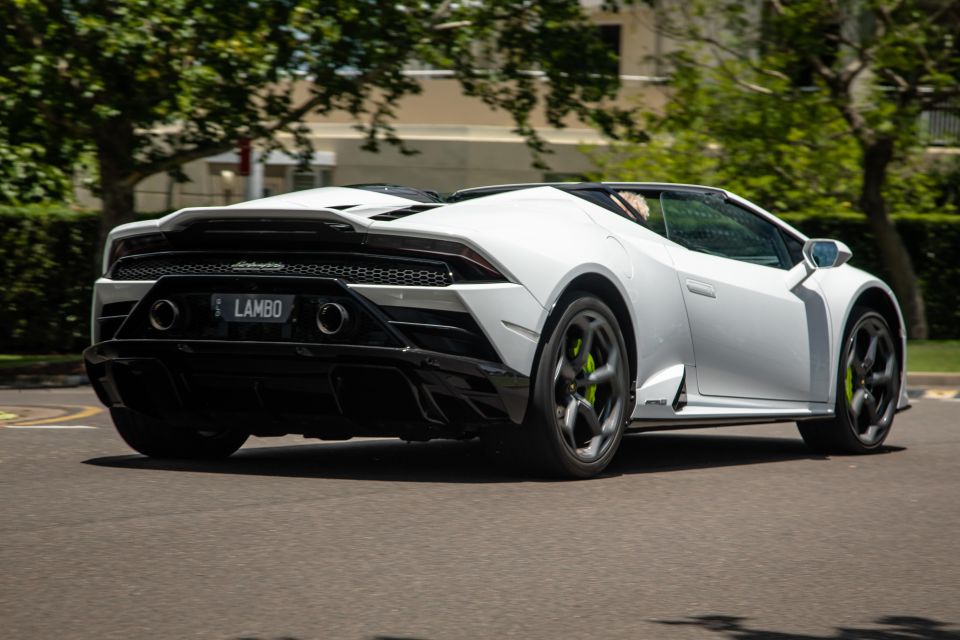
Roof-down travel is mandatory in any Spyder unless it’s raining cats and dogs (a sprinkle won’t bother you). It’s the simultaneous amplification of the V10 roar under throttle you crave time and time again, even if you’ve forgotten sunblock.
It’s 20 minutes before I even think of toggling through the red Anima button on the steering wheel, which takes me out of the least aggressive Strada Mode, into Sport. That’s because it still delivers an adult-size punch whenever you give it a bit.
There’s plenty of that signature V10 crackle and pop to keep you (and those around you) thoroughly entertained.
All the major controls are amped-up with a prod into Sport, including engine, throttle and gearbox response, and the steering ratio.
Here’s the thing. While it might seem too manic for urban duties, the moment you’re out of stop/start traffic you’ll want to be in this mode as the default. Not only for the intense acceleration off the mark, but again for the sheer fury of the V10 at full cry and the feast of extra decibels that come with open-top exhilaration in a Lamborghini.
Honestly, there isn’t a more aurally addictive noise that’s so accessible at legal speeds. Moreover, you won’t have to touch the paddles beyond first, because the auto-shift in Sport is so wonderfully intuitive – downshifting three gears at warp speed with perfectly-timed throttle blips under brakes. Brilliant stuff.
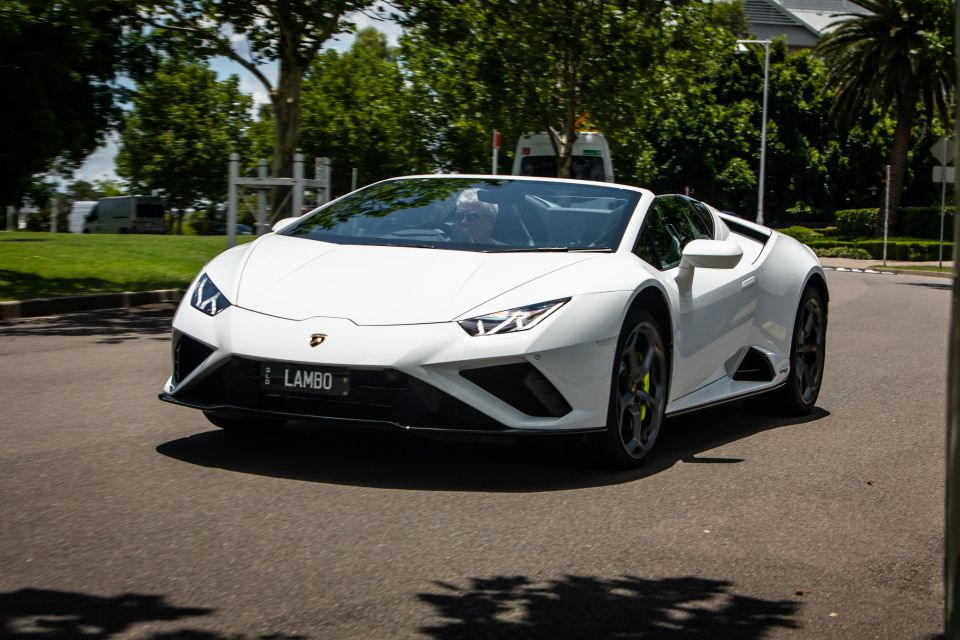
There’s probably no real need to ever be in Corsa (Racing) unless you’re at a track, because throttle and gearbox aggression levels are dialled right up to the hilt – but I tried it anyway for the thrill of those back-slapping, rapid-fire upshifts (and downshifts).
While the Spyder might be down on power and performance compared with the AWD and its two main rivals it feels ferociously quick, made all-the-more dramatic with that booming V10 and a rapidly rising rev counter.
Let’s not forget the real pleasure derived from zero-lag throttle response. You can go for those ‘gaps’ with supreme confidence.
Strada offers the most ride compliance of the three suspension settings and it’s genuinely surprising just how adept the Huracan Evo Spyder is at cushioning speed bumps and negating patchy road surfaces.
Sport definitely firms things up with the car’s adaptive damping system, but there’s still sufficient travel to absorb broken roads and the like. Honestly, even in Corsa I didn’t find it too jarring. Put that down to the Spyder’s electromagnetic dampers and its hybrid chassis made from aluminium and carbon-fibre for a tad more give.
There’s also no detectable flex in the body with the roof open under medium cornering loads, and the car is beautifully poised at all times.
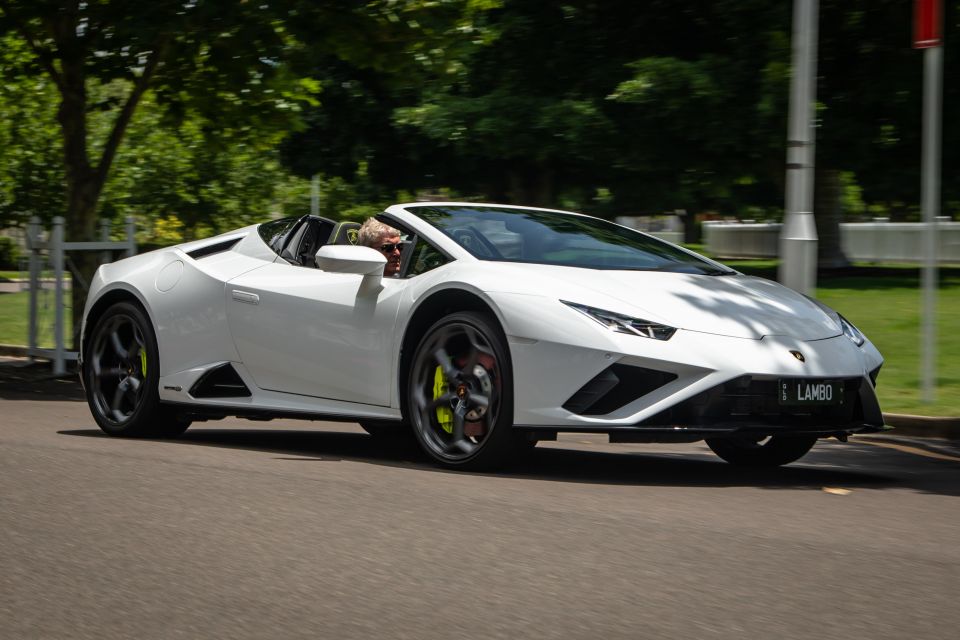
I’m a big fan of the steering weight and feel in the Huracan Evo, and the soft-top feels similar. It’s not highly strung like a Ferrari (some find it too light) or as precise as the McLaren, but then again, I like it for that slightly less manic response.
Our tester was fitted with Lamborghini’s standard steel braking system using specially contoured ventilated and cross-drilled discs (365mm and eight-pot front, 356mm and four-pot rear).
Stopping power was exceptional, so much so that I had to check they weren’t the optional carbon-ceramics.
As far as fuel economy goes, Lamborghini claims 13.9L/100km on a combined cycle, but don’t be surprised to see a reading beyond 20L/100km on a diet of exclusively urban kms.
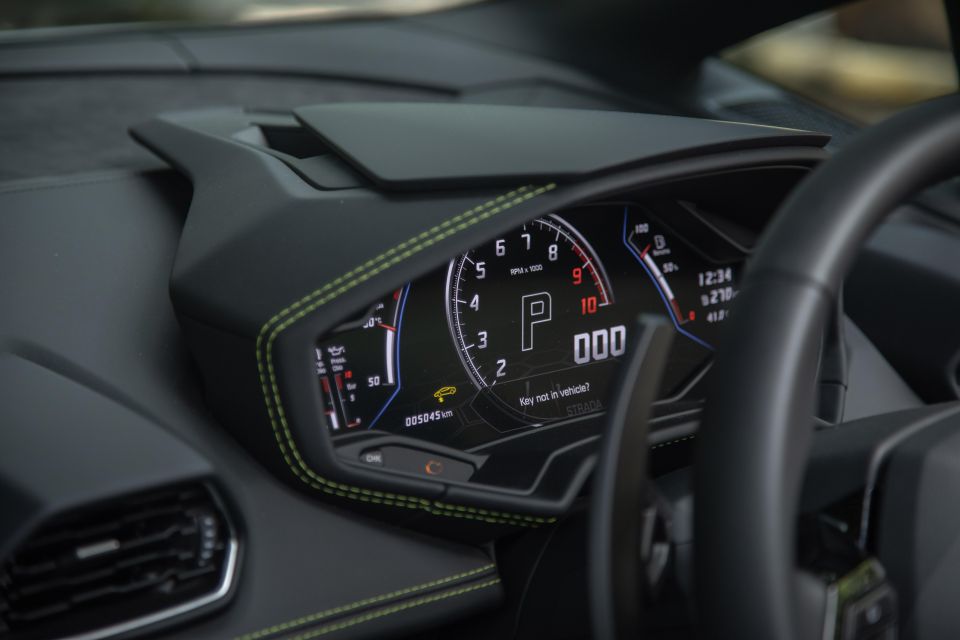
The Lamborghini Huracan range is offered with a three-year/unlimited-kilometre warranty.
Coverage for the fourth year can be purchased for $8160 while coverage for the fifth year is priced at $15,860.
Maintenance packages are available over three years for $7450 or five years for $15,860.
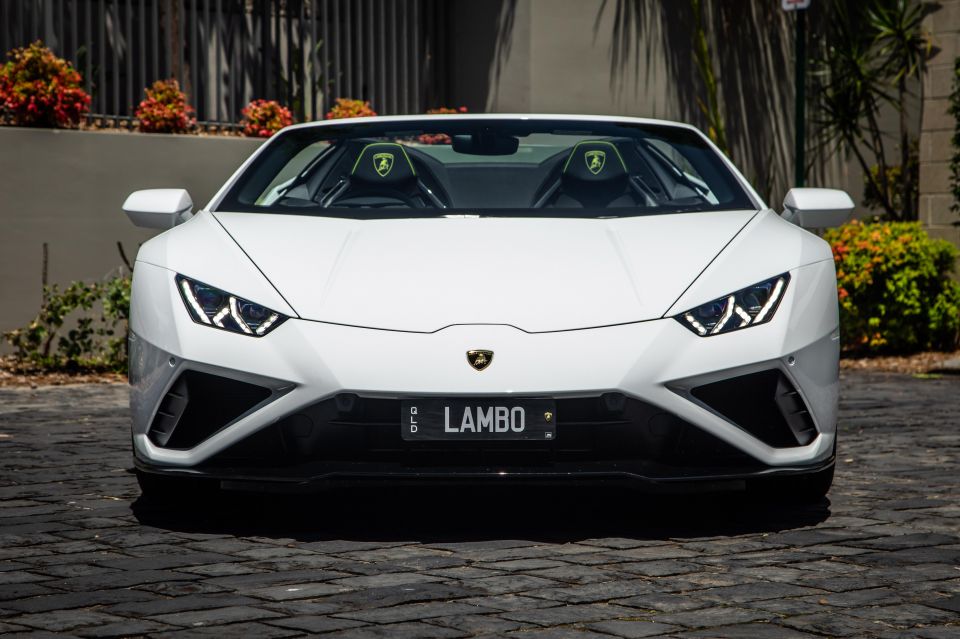
Buy your new car without the stress. It's fast, simple and completely free.

Great service from Travis and team, second time I have used this business would not hesitate to recommend them to anyone
Craig C.
Purchased a Ford Ranger in Sunshine Coast, QLD
CarExpert helped Craig save $7,224 on his Ford Ranger, now let us save you on your next new car.
Get your BEST priceThere are faster, more adept handling exotics that provide a similar take on open-air motoring, but none offer anywhere near same sense of occasion, outrageous Italian styling, or operatic symphony of the Lamborghini Huracan Evo Spyder.
The enthusiast in me says buy the hard-top Huracan Evo in Arancia Borealis for its extra sleekness and bulletproof track performance.
But, as a Sydneysider living near the beaches with an addiction to atmo V10s – you’d have to buy the Spyder, wouldn’t you?
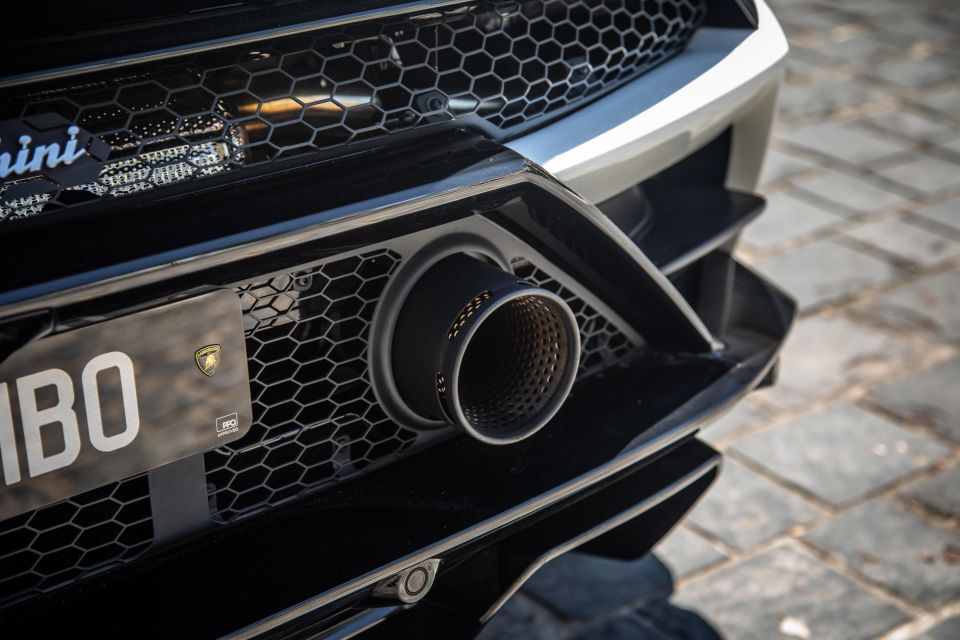
Click the images for the full gallery
MORE: Lamborghini Huracan news, reviews, comparisons and videos
Where expert car reviews meet expert car buying – CarExpert gives you trusted advice, personalised service and real savings on your next new car.


Max Davies
6 Days Ago


James Wong
5 Days Ago


James Wong
4 Days Ago


Max Davies
3 Days Ago


Josh Nevett
1 Day Ago


Max Davies
1 Day Ago